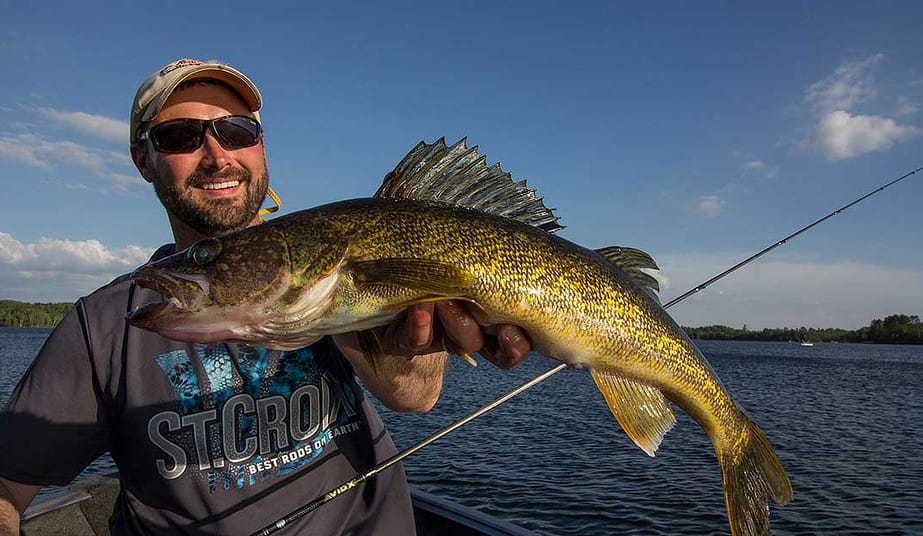Get the Lead Out for Summer Walleye Success
The use of leadcore line originated in the Northeast, where anglers used weighted lines to troll spoons for deep-water lake trout in New York and New England. Fishermen began experimenting with leadcore for deep-water walleyes on prairie impoundments like Lake McConaughy, Nebraska in the early 1980s. Most historians credit legendary walleye guide Bob Propst Sr. as being the catalyst for exporting the tactic to other waters, such as Lake Oahe in South Dakota.
Walleye trollers began trolling segmented leadcore—a 20- or 30-yard segment of leadcore tied into monofilament line as a sinker—on shallow Lake Winnebago in Wisconsin. Prominent Winnebago trollers Gary Parsons and Keith Kavajecz brought the tactic to the first Professional Walleye Trail tournament on Lake Erie in 1991, where they finished in second and third places trolling minnow-imitating crankbaits. Mister Walleye Gary Roach adopted the tactic to win the event.
In the coming years, touring walleye pros applied leadcore trolling of crankbaits to win big money in competition. The late Ron Seelhoff is considered by many to be the preeminent leadcore troller of all time, having trolled his way to numerous major wins and several championship titles.
Leadcore fishing is fundamentally simple. An outer sheath of Dacron or other line contains an inner thin filament of lead, so the entire length of line you let out acts as a “living” sinker. The more line you let out, the heavier the weight, and the deeper your lure goes. Add a 5- to 7-foot fluorocarbon leader to the end of your leadcore line, plus a small snap for attaching your lure.

Leadcore line is typically marked a different color every 10 yards, providing instant orientation as to how much line is in the water. In general, each additional 10 yards will make a crankbait run about 5 feet deeper. If you keep inching out a bit more line out as you troll until your crankbait begins to tick bottom, then wind in a few turns of the reel, you can be assured that your lure is running barely inches above bottom. Line counter reels help ensure repeatable accuracy and trolling efficiency.
Leadcore allows anglers to send even small crankbaits down into deep water, and to precisely control the depth the lure runs. Once you stabilize your trolling speed, baits remains in the fish zone for long periods of time. You can run lures literally inches off the bottom—or skip or even pound the bottom—by slightly adjusting the length of line out. Place telescopic, long-handled trolling rods in rod holders and watch your rod tip to detect lure vibrations and ensure that your lure is running properly.
Walleye anglers typically use 18- or 27-pound-test leadcore for basin trolling with shad- or minnow-imitating crankbaits, letting just enough line out to occasionally scratch bottom. Mississippi River anglers fishing for sauger on Lake Pepin along the Minnesota-Wisconsin border, by comparison, routinely pound their crankbaits into the bottom to generate noise and provoke reaction strikes. On deep Missouri River reservoirs, Dakota anglers use leadcore to troll bass-style tandem spinnerbaits just above the tops of submerged standing trees, occasionally ticking the tallest limbs. Single-hook spinnerbaits are incredibly snag-resistant in timber, and can save you dozens or hundreds of dollars in lost lures compared to snagging treble-hook crankbaits in treetops.










